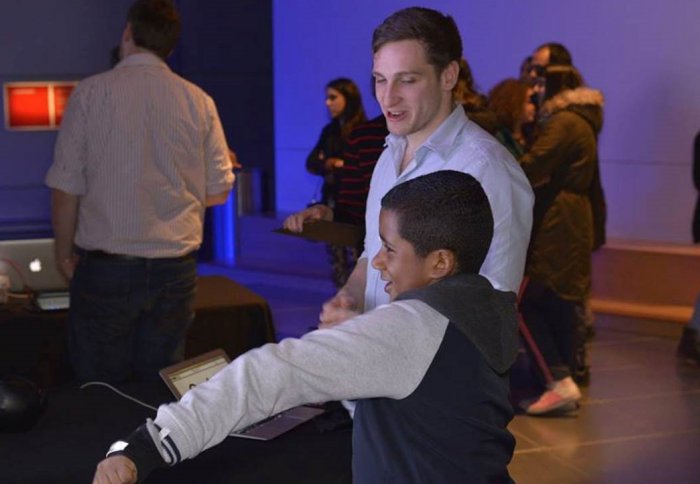Project investigating the implementation of Fused Motion and Muscle Monitoring

Ongoing research in the Medical Engineering Group investigates the implementation of Fused Motion and Muscle Monitoring to trace Human Performance.
The Cornerman project, aims to further the research by considering an application in Boxing Training.
In order to quantitatively assess their training Boxers must rely on feedback from coaches or from video analysis. Simple unobtrusive slip-on sensors would make high quality performance feedback more convenient and accessible to Boxers. Strava and Nike+ are examples of platforms that use wearable sensors (GPS-based) to provide runners with a descriptive summary of their run or cycle. These products have proven very popular and it is the projects aim to achieve a similar quality of descriptive statistics for boxing training.
A fully operational system is currently able to detect different punch types, during a round of Boxing training, and calculate useful statistics such as punch speed, pull back time, punch count and punch combination count. The system uses wearable Inertial Measurement Units to stream live data from a boxer to a Ringside computer via Bluetooth, where it is processed to display instant feedback.
Recently the project was showcased at the Science Museum as part of an interactive display. Visitors had the opportunity to test out the training system for themselves. Feedback through the user interface encouraged Visitors to get competitive with each other, and attempt to execute the best performance in a 30 second round of Shadow Boxing. Following the Science Museum event, the Cornerman Project was featured in the Spring/Summer edition of the fitness and health magazine WellBeing World.
The project is being conducted as a Mechanical Engineering ME4 Individual Project in conjunction with the Rio Tinto Sports Innovation Challenge, under the supervision of Dr Ravi Vaidyanathan.
Article text (excluding photos or graphics) available under an Attribution-NonCommercial-ShareAlike Creative Commons license.
Photos and graphics subject to third party copyright used with permission or © Imperial College London.